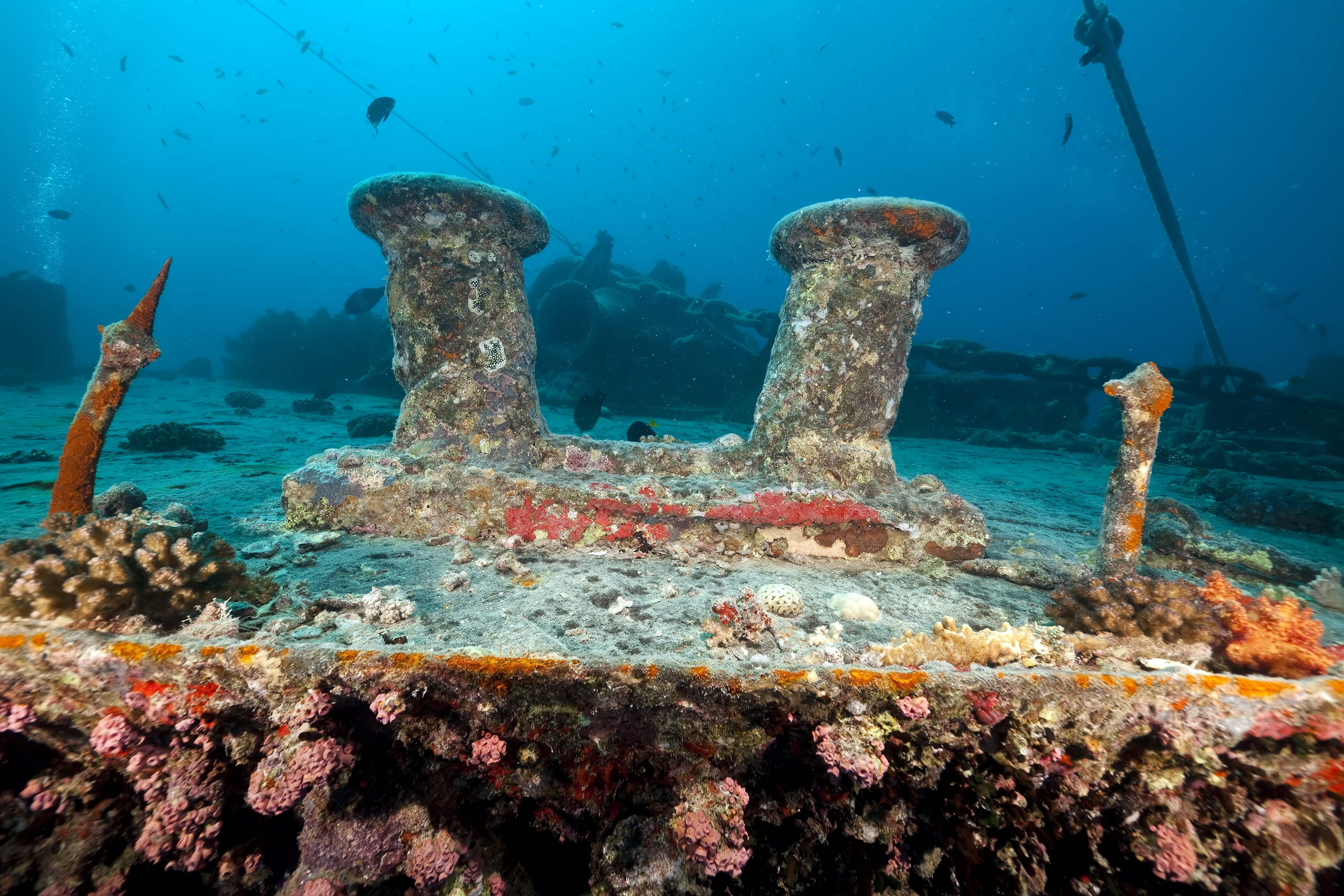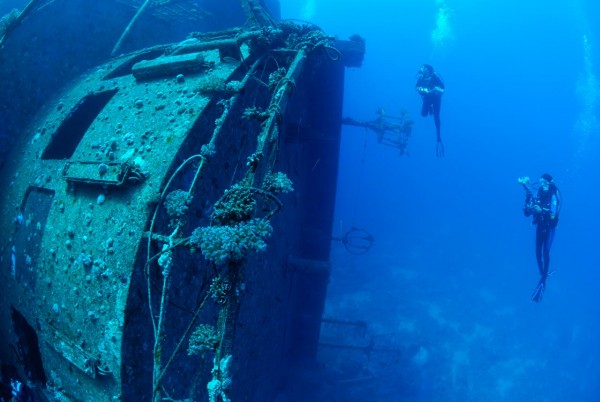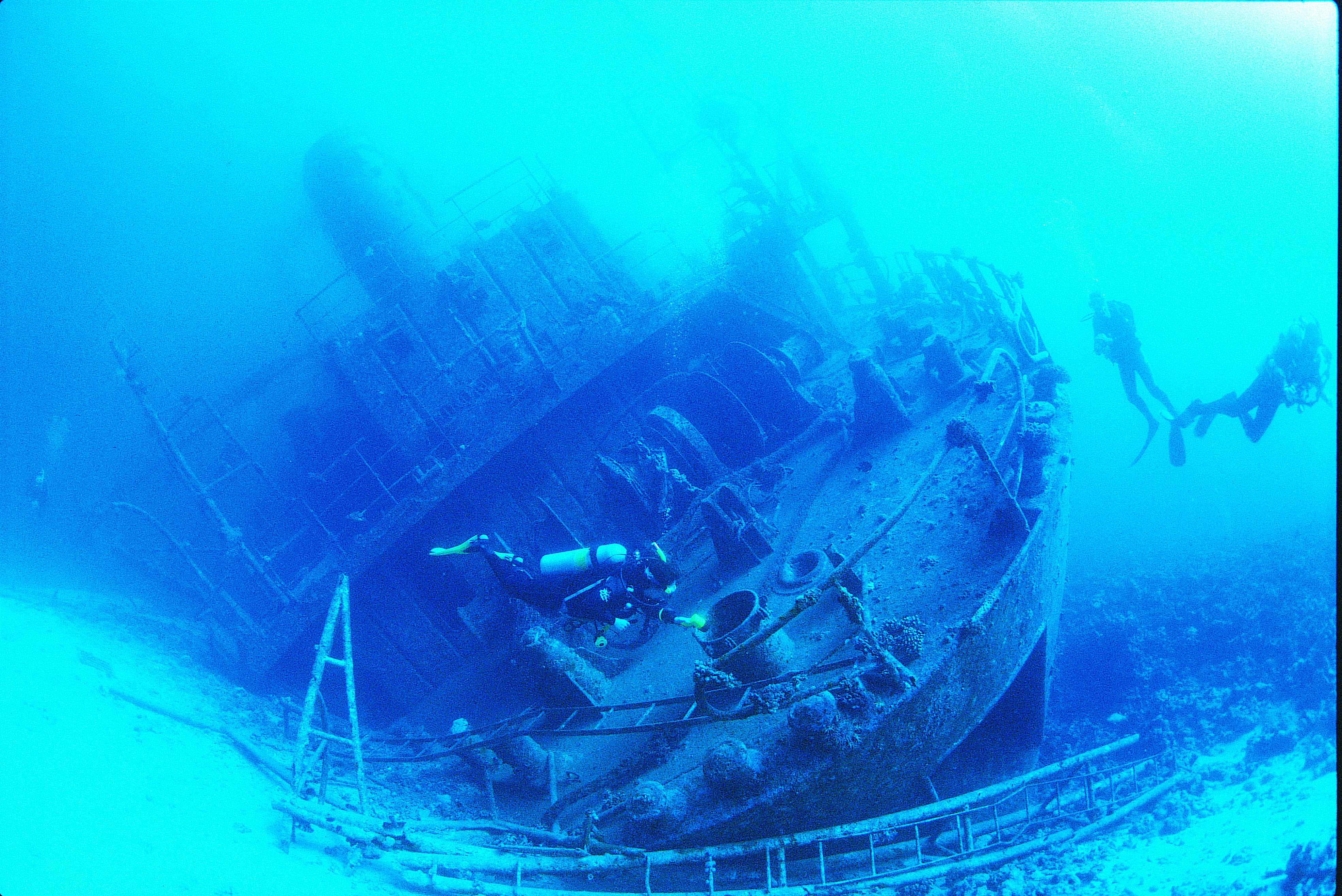Diving in the Red Sea represents a range of reefs, walls, diverse fish life with over 2000 different types of fish and of course fabulous wrecks. Here you can expect to find colourful soft and hard corals on pretty much every dive you do. If you want to get adventurous, the beautiful wrecks of Abu Nuhas, SS Thistlegorm, Rosalie Moller, Dunraven and Ulysses are always available on liveaboards departing from Hurghada and Marsa Alam.
If you are fascinated about wrecks, this blog will outline the top 5 wrecks you can dive in the Red Sea in search of hidden treasures and historical artefacts.

1) The Thistlegorm on the Strait of Gobal, north of Ras Mohammed is considered one of the best wreck dives in the world.
This wreck was discovered in 1956 by Jacques Cousteau and is probably the most famous wreck in the world. It sank in 1941 when it was hit by a German bomb that blew a hole in the port side, igniting the tank ammunition that was in the hold. The explosion ripped the roof of the ship backwards, rather like opening a tin of sardines.
The stern section of the wreck lies almost horizontal to the seabed in 30 metres of water, the remainder of the wreck is nearly upright. Inside the wreckage, tyres, tanks, motorbikes, Bedford trucks, waders and wellington boots can be seen. Penetration is possible around the bridge and blast area. The large propeller is still in position and the guns on the stern are in excellent condition. Artillery litters the blast area. A bathtub can be seen towards the bow and a toilet near the stern. The sea life is impressive with possibility of seeing tuna overhead the resident turtle. Expect this to be a very busy dive site, especially once the day boats have reached the area.
2) The Salem Express was a ferry carrying pilgrims returning from Mecca. It sank in 1991 after hitting the reef at night perishing 600 victims in one of the greatest marine tragedies of all time. Divers are asked to dive the wreck considerately with respect for the great loss of life and penetration of the wreck is forbidden.
The propellers make an impressive sight and the covering of hard corals now colonising the wreck show the power of the ocean making new life out of this tragedy. Fish life is now abundant and the funnels of the wreck with large "S" and the name on the bow are clearly visible. The site is reasonably sheltered and is not exposed to strong currents allowing divers of all levels from 12 to 30 metres.

3) The Giannis D has become a classic wreck on the Northern Red Sea routes, especially among photographers who visit looking for the perfect shot. This Greek freighter hit the reef in April 1983 and over the course of two weeks slowly broke into two parts and sank. She is the most dived wreck in the area, laying at 24 metres and leaning to port with a fully intact stern section and an impressive engine room packed with glass fish.
The bow is very interesting too but a long swim out. Giannis D is a great wreck for penetration but beware of disorientation due to the angle at which it lays. Be wary of the many lionfish and scorpion fish that call this wreck home and watch out for the strong surges in and around the wreck in rough weather.
4) The Carnatic is one of the oldest shipwrecks in the Red Sea. The Carnatic was a British P&O steamer which struck the reef in 1869 and sank the next day as the weather worsened. She was a passenger and mail ship and is sometimes known as the ‘wine’ wreck for the numerous bottles once found in the holds; sadly, not many now remain to be seen. Rumour has it that she sank with forty thousand pounds sterling of gold bullion, much of which was never recovered.
The wreck lays in 29 metres and now the whole hull is draped in multicoloured soft corals and the inner areas are full of glass fish complete with red mouthed grouper sentinel. One davit supports a beautiful table coral. The wreck is now home to large grouper, octopus, morays, jacks and tuna cruising overhead.
5) The Rosalie Moller is another wreck remain from the WWII left in the Northern Red Sea in the 1940's hit by a bomb. Penetration is accessible as the cracks are huge, but it is not necessary as the significant parts of the wreck are visible from the outside.
The prop and rudder are still in good condition. The deck is in good condition and very clean. The sea life is amazing, with glassfish that can be seen by the deck and reef sharks that can be spotted.
